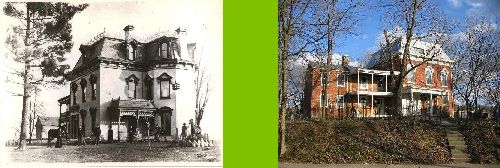I promised this for John over at the Devil Queen who is having an orgy with the stuff this week. If you buy this pre-mixed it is quite expensive but to make yourself would be quite cheap unless you choose to use a cobolt, chromium or cadmium based color pigment! Let me just add that the only reason I know this stuff is because we found that Household Discoveries Book from 1909. It has been most useful in helping me understand exactly what people had available to use and why. Since I was painting my basement walls with slaked lime I have come to realize that this 4000 year old technique has become obsolete in this country in the last 50 years. When I tell people that I have been whitewashing my walls they look at me with a puzzled expression or make a comment like "I didn't think people did that anymore." The truth is that they don't and that is why basements look like crap in old houses. So what does this have to do with milk paint? Here are two recipes from the 1909 book as they are written;
Lime Paint.- A mixture combining the qualities of paint with those of whitewash may be made with slaked lime as a basis by the addition of various materials, as milk, whiting, salt, alum, copperas, potash, ashes, sand and pitch. with or without a small portion of white lead and linseed oil. These mixtures are more durable than whitewash, but have less finish than white lead and oil. The cost is intermediate between the two.
To prepare a lime paint, slake lime with water and let dry to the consistency of paste. Thin with skimmed milk to the proper thickness to lay on with a brush. Add color matter as desired.
Or slake 4 ounces of lime with water to the consistency of cream and stir into it 4 quarts of skimmed milk. Sprinkle the surface through a sieve 5 pounds of whiting. Let this gradually sink, then stir and rub together thouroughly and add coloring matter as desired. The casein or curd of milk, by the action of caustic lime becomes insoluble and produces a paint of great tenacity suitable for farm buildings, cellars, walls, and all rough outdoor purposes. Apply with a paint brush. Two or three coats will be necessary. The above quantity is sufficient for 100 square yards.
There are three more recipes involving such items as white pitch, potash, copperas, ashes, white lead and linseed oil in various amounts. The book also has recipes for fireproof paint, blackboard paint, acid proof paint, barrel paint and glue paint for kitchen floors! You could always go to Home Depot of course but you won't find bags of masons lime there. You will need to find a brick supplier for that and it will cost between $5 and $7 for a 50 lb. bag
While knowing the basic ingredients is useful, this opens oneself up to other questions like "What the phuck is copperas?" So you better have a dictionary handy!

8 comments:
Your 1909 book is amazing Gary. Ever thought about scanning it in and selling copies? or PDF copies? I'm sure there'd be a lot of takers. (I even know someone *ahem, cough* who sets digital/print books). And seeing as the book is over 70yrs old there should be no copyright issues.
I know I'd definitely be interested in a copy!
I would want it also
Thanks for the recipes. Here is another question for you(copperas is Iron (II) sulfate, a blue-green water soluable mineral/compound incase anyone else is bugged by an unanswered question): Is there anything they didn't use lime for back in the day?
I can't help but wonder if the switching from plaster to sheetrock was such a great idea; sure, it is quicker to install, but I'm suspecious that it was used for 4000+ years for a reason besides they were too lazy or stupid to find something better.
I'm with Angus, your 1909 book is pretty damn cool (though I still wonder who would feed phosphorus to a rat).
Mind you, then Gary wouldn't be able to read those bedtime stories to us, because we'd all have read them ourselves...
(Shut up Angus).
There is a 1914 edition currently on Ebay if you need one so bad!(item 280050399619)Two days left starting at $9.99.
With 744 pages before you get to the recipes section and the fact that only 8 people would buy the thing on a disk divided by the # of hours of scanning and tweaking to make the thing available to the general public. Coupled with the fact that I have two houses to maintain, one to fix up and a 3 year old to raise, I say, buy it on Ebay! It would certainly be cheaper.
744 pages? Oh. Yes ... well ... :)
I realize this discussion occurred in 2006, but that's the beauty of the internet: it's here for posterity! And so too is the 1909 Household Discoveries book, if anyone is looking for it:
https://openlibrary.org/books/OL14172623M/Household_discoveries
Post a Comment